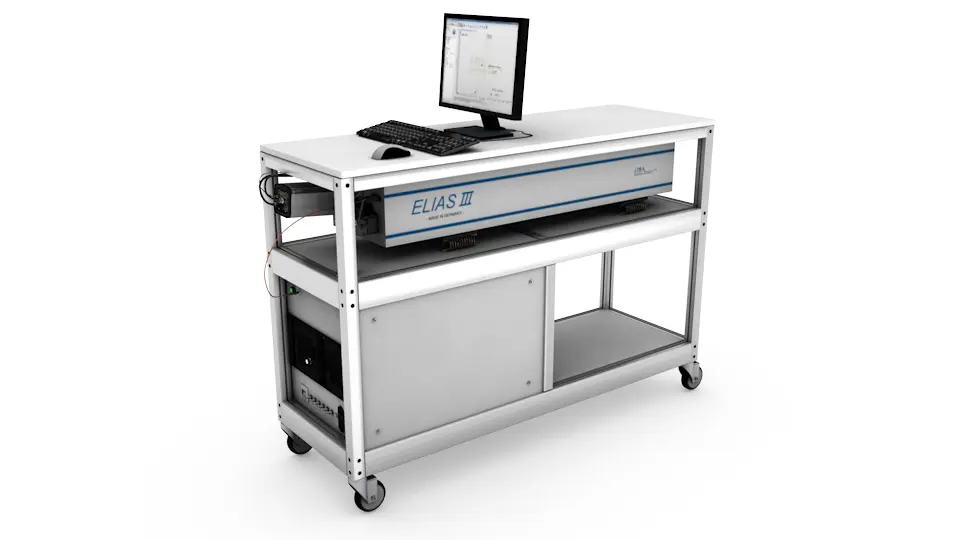
New World Record with ELIAS III Echelle Spectrometer
Engineers from LTB Lasertechnik Berlin recently tested their latest spectrometer generation in Los Gatos, California. During the test, they achieved a minimum line width of 20 fm FWHM at a wavelength of 193 nm, corresponding to a spectral resolution of 10 million. This allowed LTB to surpass its own previous record of 60 fm. The measurement took place at Positive Light, as only their 193 nm “Indigo-DUV” laser has a spectral width narrow enough to measure the performance of LTB’s spectrometers. It is only with a laser that has a significantly narrower spectral width that the resolution capability of the spectrometer can be measured.
The development was driven by the increasing demands for measurement technology in the lithography industry. The goal was to improve the spectral resolution FWHM. ELIAS III is the latest patented model in the series of ultra-high-resolution spectrometers developed by LTB in collaboration with the Institute for Spectrochemistry and Applied Spectroscopy (ISAS) Berlin.
Over the last 3 years, LTB Lasertechnik Berlin GmbH has delivered more than 75 systems from its ELIAS series worldwide. ELIAS (Emission Line Analyzing Spectrometer) is the only commercially available spectrometer with such an extremely high resolution.
ELIAS III is the latest patented model in the series of ultra-high-resolution spectrometers developed by LTB in collaboration with the Institute for Spectrochemistry and Applied Spectroscopy (ISAS) Berlin.
The primary application of these ultra-high-resolution spectrometers is the spectral characterization of excimer lasers in microlithography at 248 nm, 193 nm, and 157 nm. They indirectly determine the quality of semiconductor circuits produced by optical laser lithography. The quality of the exposure process is defined by the spectral properties of the lasers and the lens optics used. Improving the spectral bandwidth of the laser allows for reducing structure sizes. With the help of ELIAS, lithography laser manufacturers have succeeded in further developing their light sources, enabling the achievement of structure widths as small as 65 nm today.
Optical lithography is just one application of the ELIAS series. Other applications include atomic absorption spectroscopy and laser diode development.

